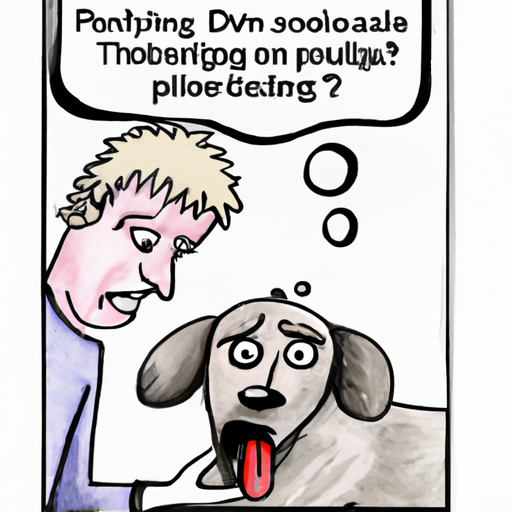Understanding Dog Panting
You might have noticed your furry friend panting on a hot day or after a vigorous game of fetch. Panting helps dogs to regulate their body temperature. Unlike humans, dogs can’t sweat through their skin. They rely on panting to expel heat and cool down their bodies.
However, panting can also be a sign of discomfort or pain. Your role as a caregiver is to discern between normal panting and panting that might indicate a problem. As a vigilant caregiver, you always want to ensure your pet’s comfort and well-being.
Signs of Painful Panting in Dogs
Dog panting can be quite normal, but you might wonder, when should you worry? Here are the signs you should look out for:
- Excessive panting: If your dog is panting heavily even when it’s not hot and they haven’t been physically active, it could be a sign of pain.
- Panting at odd times: Dogs usually pant during the day when it’s hot, not at night when it’s cooler. If your dog is panting at odd times, it could be a cause for concern.
- Changes in the panting pattern: If the panting is louder, harsher, or seems difficult for your dog, it could signal pain.
- Additional signs: Look out for other signs of discomfort, such as restlessness, loss of appetite, or changes in behavior.
Common Causes of Painful Panting in Dogs
Painful panting in dogs can have several causes. As a caregiver, you’d want to be aware of these to offer the best care to your pet. Here are some common causes:
- Heatstroke: This can cause heavy panting and even collapse.
- Obesity: Overweight dogs can pant excessively as they carry extra weight.
- Respiratory disorders or heart diseases: Any diseases affecting the lungs or heart can cause difficulty in breathing and panting.
- Pain: If your dog is in physical discomfort, it might pant excessively.
What to Do When Your Dog is Panting from Pain
If you believe your dog is panting from pain, it’s important to act quickly and calmly. Here’s what you can do:
- Try to calm your dog down. A calm environment can help reduce panting.
- Check for visible signs of injury. If you see any, avoid touching the area and consult a vet immediately.
- If there’s no apparent cause for the panting, consider any recent changes in your dog’s life that might be causing stress or anxiety.
- Consult your vet if the panting continues without any apparent cause.
| Step | Action |
|---|---|
| 1 | Calm your dog |
| 2 | Check for visible signs of injury |
| 3 | Consider recent changes |
| 4 | Consult your vet |
Frequently Asked Questions
Q: Can panting be a sign of stress in dogs?\
A: Yes, dogs can pant excessively when they are stressed or anxious.
Q: How can I tell the difference between normal panting and painful panting?\
A: Excessive panting, panting at odd times, changes in the panting pattern, and additional signs of discomfort can indicate painful panting.
Q: What should I do if my dog is panting from pain?\
A: Calm your dog, check for visible injuries, consider recent changes, and consult your vet.
Remember, as a caregiver, your intuition and knowledge of your pet is invaluable. Trust your instincts and never hesitate to seek professional help if you believe your dog is in pain.



